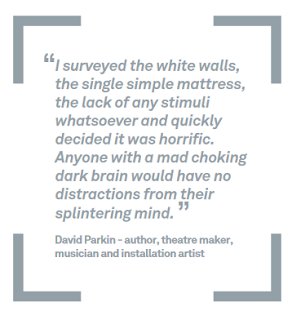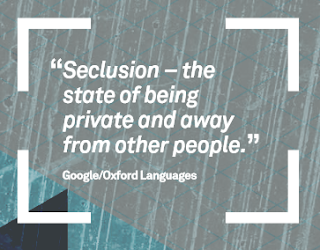Redesigning care models through intentional delegation and
potential tech
enablement can free up nurses’ time.
I learned of this study through twitter (see below) and ongoing awareness of the work, contribution and debate regards management consultants over the years. The research study was conducted in USA and I have no work experience there. As stated many times on W2tQ: my context is UK-based and public sector - NHS. I have been seconded in the past to a project which engaged management consultancy companies, the work involving IT and communications. The latter was focussed upon (much needed) IT engagement and being 'on message'.
If employed long enough in the UK public health sector, you will come across consultancy employees eventually (whoever is in government too). Through news, media, consultants (friendly, with wide experience, eager to engage and deliver) will be introduced to the team, on placement for several weeks to collect data through a series of meetings, and conduct a presentation about impending change. The management consultancy sector often have a bad press, with ongoing critique and debate regards their role, across the Atlantic and globally. More on that to follow.
A brief introduction to the study follows:
"We conducted a survey of 310 registered nurses
across the United States from February 8 to March
22, 2023. Our goal was to understand nurses’ perception of time spent throughout the course of a
shift and to identify existing and desired resources
to help nurses provide high-quality care. Our sample focused on nurses in roles that predominantly
provide direct patient care in the intensive-care
unit, step-down, general medical surgical, or
emergency department settings. Insights were
weighted by length of shift (the minimum shift time
included was six hours)." p.2.
To begin, I like 'reimaging' in the title. Healthcare should always be about imagination, envisioning, and action - on an individual and collective basis. Organisational reimaging is also what management consultancy is predicated upon. 'Care model' here, appears to refer to the care environment (and experience?) as found. Gap, also in the title is another positive. Gaps must be seen, to see how we might close, bridge and span them.
Over several decades a preoccupation with 'process' has been apparent: the nursing process and processes as events and sequential series in project management. But what is this? No 'process' but one instance of processes. While this was encouraging, as presented, emphasis is placed on activities and tech - both of which can engender reductive and task-based perspectives. Allied with tech, improved delegation is the stated aim of the study. 'What do you expect?' - might be the rejoinder. As per the twitter replies the study conforms to type, brief and 'message':
"Achieving this may require health
systems to invest heavily in technology, change
management, and workflow redesign.
Realizing these changes will require bold departures
from healthcare organizations’ current state of
processes. It will be critical for hospitals to bring
both discipline and creativity to redesigning care
delivery in order to effectively scale change and see
meaningful time savings. Close collaboration beyond
nursing is also paramount to ensure alignment
across the care team and hospital functions
including administration, IT, informatics, facilities,
and operations." p.8.
Technology is often described as the catalyst, but the impact (and risks - safety?) are often missed - a case of 'wag the dog'?
There is a global shortfall in the nursing workforce. National governments take a local perspective tempered (we hope) with international agreements on overseas recruitment. From the shortage in the USA listed (below), to the potential time saving equivalence is a significant outcome:
"When we translate
the net amount of time freed up to the projected
amount of nursing time needed, we estimate the
potential to close the workforce gap by up to
300,000 nurses." p.2.
I am a technology enthusiast outside of work, but a technology realist at work (I do enthuse with students and enjoy hearing their views and experiences - personally, at university, on placement). I've used two electronic health record systems in mental health over the past four years. It is usable, but - as ever - could be improved. Thoughts re. tech are currently clouded by the UK use of telecoms and IT as the access point for primary care. Unfortunately this acts as a 'gate'. More tech is not necessarily better. Can it be argued that the pace of technical change (hardware and software - cloud, devices, decision support ...) is so fast that it is constantly contested? New systems need to be re-evaluated for patient benefits, improvements in care, safety, fit for purpose and other desiderata. Many consultants and advisors point to the existence of disciplinary and (hence) knowledge silos. What is key, is how IT can disrupt existing practice through these silos, especially in the form of AI.
To return to the study(!), it is primarily in-patient hence hospital based. Perhaps hospitals are the biggest silos of all? These management studies flow, forming a series, a work-stream that includes:
How ‘Care at Home’ ecosystems can reshape patient care
Virtual hospitals could offer respite to overwhelmed health systems
Nursing in 2023: How hospitals are confronting shortages
These are cross-referenced online, but what price integrated care - and person-centred care at home?
Prof Alison Leary's tweet highlights research that has demonstrated the improved patient outcomes when care is delivered by Registered Nurses. The importance of training, registration and need to study the 'work' of nurses and their workload is not new:
Robb, I. H. (1903). The Quality of Thoroughness in Nurses’ Work.
The American Journal of Nursing, 4(3), 168–177. https://doi.org/10.2307/3401722
Plus,
"One of the new applications for decision analysis derives from the realization that if physicians are to become effective advocates for quality health care delivery under the incentives engendered by the newer cost-containment strategies, a common language is required to permit communication between physicians, regulators, policy makers and patients relative to what comprises effective care and why physicians do what they do." Preface, v. (my emphasis)
Knoebel, S.B. (1986). Perspectives on Clinical Decision-Making. New York: Futura Publishing Co., Inc., Mt. Kisco.
Whether 'physician', 'doctor' is cited as the user - an electronic health record should cohere across disciplines including nurses - the multi-disciplinary team; even as disciplinary system use may have its own
signature (subsets
). We are still seeking a
language. For me this remains SOCIO-technical.
Innovations are mentioned in the study, but the specifics are not stated in explicit nursing terms, but related to the role of technology, electronic health records (yes, a care record is critical), building on existing tools and reducing implementation risk. Sadly, the informational environment (body politic?) appears to place constraints on the nursing 'care models' referred to here.
On delegation, the following makes a lot of sense: "While nurses report wanting to spend more time
overall on direct patient care, there are specific
tasks that could be delegated both vertically
and horizontally to ensure that the work nurses
perform is at the top of their license and promotes
professional satisfaction." p.5. (my emphasis)
INDIVIDUAL
|
INTERPERSONAL : SCIENCES
HUMANISTIC -------------------------------------- MECHANISTIC
SOCIOLOGY : POLITICAL
|
GROUPNurses thinking of leaving - reasons include: "not feeling valued by their organization and not
having a manageable workload." with additional settings inc. home care
and long-term care facilities.
This is a common expressed wish by nurses: "spend
more time with their patients" but how often is it qualified psycho-socially?
|
310 subjects - nurses
".. estimates still suggest a potential
shortage of 200,000 to 450,000 nurses in the
United States, with acute-care settings likely to
be most affected."
Settings include: intensive-care
unit, step-down, general medical surgical, or
emergency department.
|
Direct patient care - relationship building, empathy and rapport?
|
effectiveness,
efficiency and equity*
The politics of health systems and health service delivery globally.
|
In the 1990s organisational hierarchies were flattened, middle management roles were reduced. Technology played its part, but there are many other factors:
https://www.nber.org/system/files/working_papers/w9633/w9633.pdf
At a time when applied AI is increasing, nursing is open to innovation, but synergy and assurance of high quality, safe, person-centred care is essential.
Socially we also need to preserve forms of work that have a role in well-being and community health - care of older people. Hierarchies and the services they 'deliver' will be flattened further and rationalised - if as nurses we are sufficiently passive. Consider the thoughts of Prof. Acemoglu, Economist, MIT:
"He [Acemoglu] imagines a day when teachers could use AI to create individual lesson plans for every student, or nurses might be able to take on much greater roles in, for example, diagnosing disease. 'Why is it that nurses cannot prescribe medications? Why must everything go through this very hierarchical approach where you have to call a doctor [to do that]?' As it is today, the people who spend the most time with patients - nurses, not doctors - are those who are paid and valued the least." p.3.
Foroohar, R. 'When mistakes involve powerful technologies, you're going to have trouble', Lunch with the FT:
Daron Acemoglu, FT Weekend, Life&Arts, 20-21 May, 2023, p.3.
There is most likely a 'corporate' signature common to these reports as there will be to the posts here (2006 ... ). For nursing's sake - vested in the sustainable development goals, the determinants of health, and climate change - we need to preserve 'models of / for care' defined, applied and refined by nurses, the profession and professionalism, registration and holistic bandwidth.
See also:
Moisoglou, I., Galanis, P., Meimeti, E., Dreliozi, A., Kolovos, P. and Prezerakos, P. (2019), "Nursing staff and patients’ length of stay",
International Journal of Health Care Quality Assurance, Vol. 32 No. 6, pp. 1004-1012.
https://doi.org/10.1108/IJHCQA-09-2018-0215 (I have accessed the abstract only).
Kim, J., Lee, J.Y., Lee, E. Risk factors for newly acquired pressure ulcer and the impact of nurse staffing on pressure ulcer incidence. J. Nurs Manag. 2022 Jul;30(5):O1-O9. doi: 10.1111/jonm.12928. Epub 2020 Feb 25. PMID: 31811735; PMCID: PMC9545092.
[ Thanks to Phil Wilson: https://twitter.com/ph_wilson1/status/1667869284305977346?s=20 ].
*Apply the 3Es across the domains of Hodges' model.
Reimagining the nursing workload: Finding time to close the workforce gap
https://www.mckinsey.com/industries/healthcare/our-insights/reimagining-the-nursing-workload-finding-time-to-close-the-workforce-gap



















 orcid.org/0000-0002-0192-8965
orcid.org/0000-0002-0192-8965